⑫ Staining
Gallyas-Braak staining
Gallyas-Braak staining, demonstrates the accumulation of phosphorylated tau, such as neurofibrillary tangles and glial inclusions, as well as glial cytoplasmic inclusion of multiple system atrophy, These deposits are colored black.
Staining procedure
*:Avoid using metal implements during the silver impregnation, reduction, and gold impregnation processes. Instead, use plastic and glass equipment.
| 1 | Deparaffinization | Xylene | 3 changes, 10 minuntes each |
|---|---|---|---|
| 2 | Removal of xylene | 100% ethanol | 3 changes, 5 minutes each |
| 3 | Hydration | 95%, 70% ethanol | 5 minutes each |
| 4 | Washing | Running tap water | 2 minutes |
| 5 | Oxidizing *1 | Oxidizing solution | 15 minutes Section color:Reddish brown |
| 6 | Washing | Running tap water | |
| 7 | Decolorizing *2 | 2% oxalic acid solution | 1 minute Section color:White |
| 8 | Washing | Running tap water | |
| 9 | Washing *3 | Distilled water | 3 changes, 1 minunte each |
| 10 | Silver impregnation *3 | Impregnating solution | 2 to 5 minutes Section color:White |
| 11 | Rinsing *3 | 0.5% acetic acid solution | 3 changes, 1 minunte each |
| 12 | Reducing *4 | Reducing solution |
Section color:Pale brown |
| 13 | Rinsing *4 | 0.5% acetic acid solution | 3 changes, 1 minunte each |
| 14 | Washing | Running tap water | |
| 15 | Rinsing *5 | Distilled water | |
| 16 | Toning *5 | Toning solution | 5 to 15 minutes Section color:Grayish white |
| 17 | Washing *6 | Running tap water | |
| 18 | Fixing *7 | Fixing solution | 10 minutes Section color:Pale purple |
| 19 | Washing *8 | Running tap water | More than 10 minutes |
| 20 | Counterstaining *9 | Kernechtrot | 5 minutes |
| 21 | Washing | Running tap water | 10 minutes |
| 22 | Dehydration | 70%, 95% ethanol | 5 minutes each |
| 23 | Dehydration | 100%ehtanol | 3 changes, 5 minutes each |
| 24 | Clearing | Xylene | 3 changes, 10 minuntes each |
| 25 | Coverslipping |
Work procedure
*1 Oxidizing
| procedure | section colors | |
|---|---|---|
|
0.25% potassium permanganate solution
|
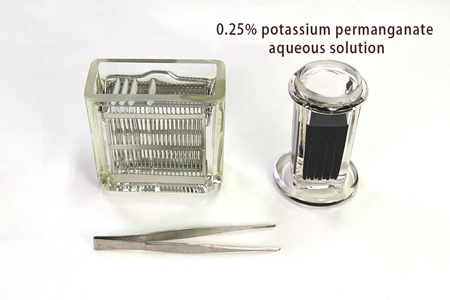 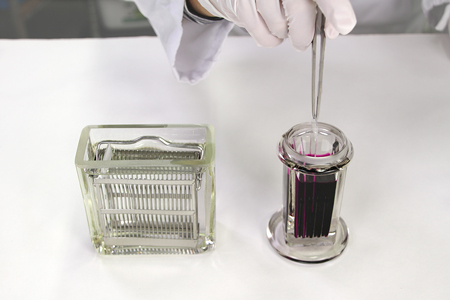
|
Turns reddish brown |
*2 Decolorizing
| procedure | section colors | |
|---|---|---|
2% oxalic acid solution
|
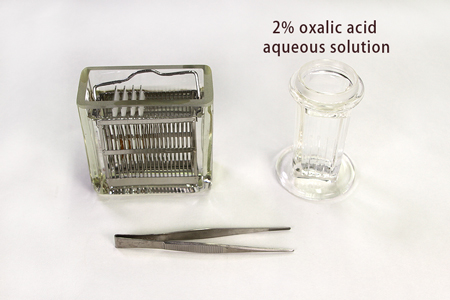 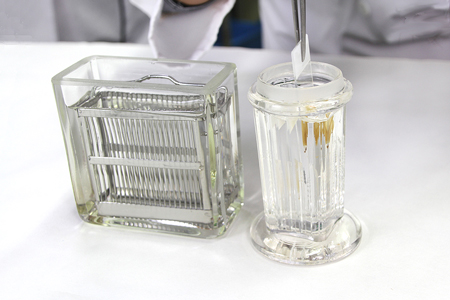
|
Before immersion in oxalic acid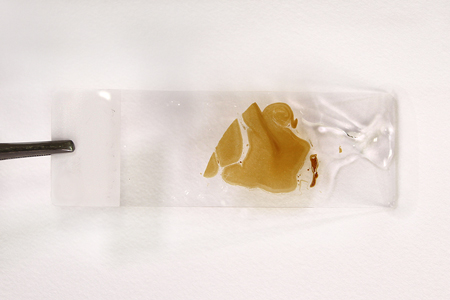 After immersion (white)  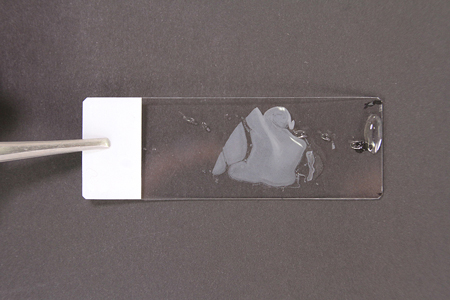
|
*3 Washing & Silver impregnation & Rinsing
| procedure | |
|---|---|
WashingDistilled water
Silver impregnationAlkaline silver iodide solution
Rinsing0.5% acetic acid solution
|
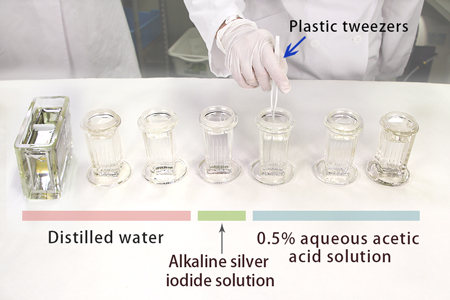 |
*4 Reducing & Rinsing
| procedure | section colors | |
|---|---|---|
Reducing
Rinsing0.5% acetic acid solution
|
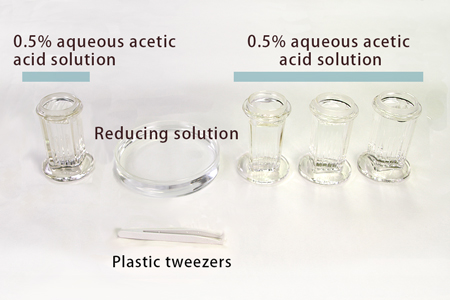 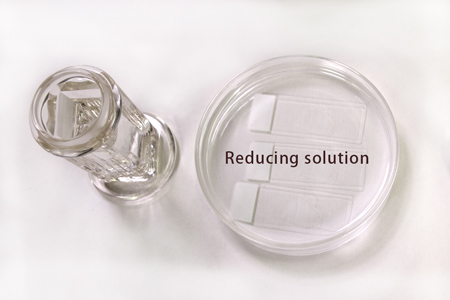 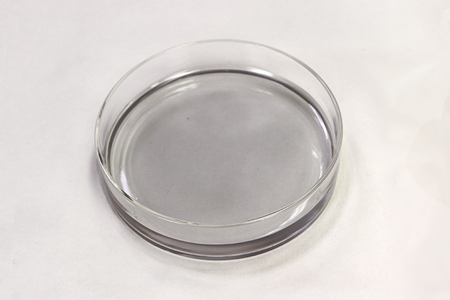 The reducing solution will darken over time. If the liquid is left in a glass container, then it will permanently stain the container due to the silver mirror reaction. Therefore, containers must be immediately washed after use.
The reducing solution will darken over time. If the liquid is left in a glass container, then it will permanently stain the container due to the silver mirror reaction. Therefore, containers must be immediately washed after use.
|
Section AAfter 8 minutes:Some parts of the section turn a very faint blackish brown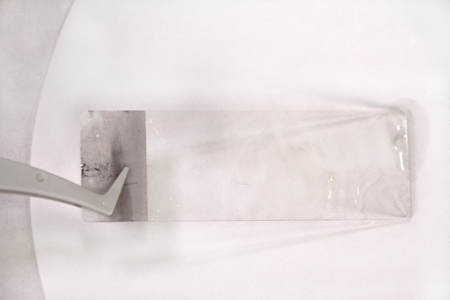 After 15 minutes:All of the structures are blackish brown in color
After 15 minutes:All of the structures are blackish brown in color
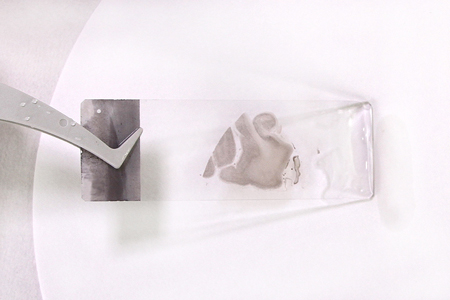 After 20 minutes:The entire section is a blackish brown color. The overall structures are difficult to discern.
After 20 minutes:The entire section is a blackish brown color. The overall structures are difficult to discern.
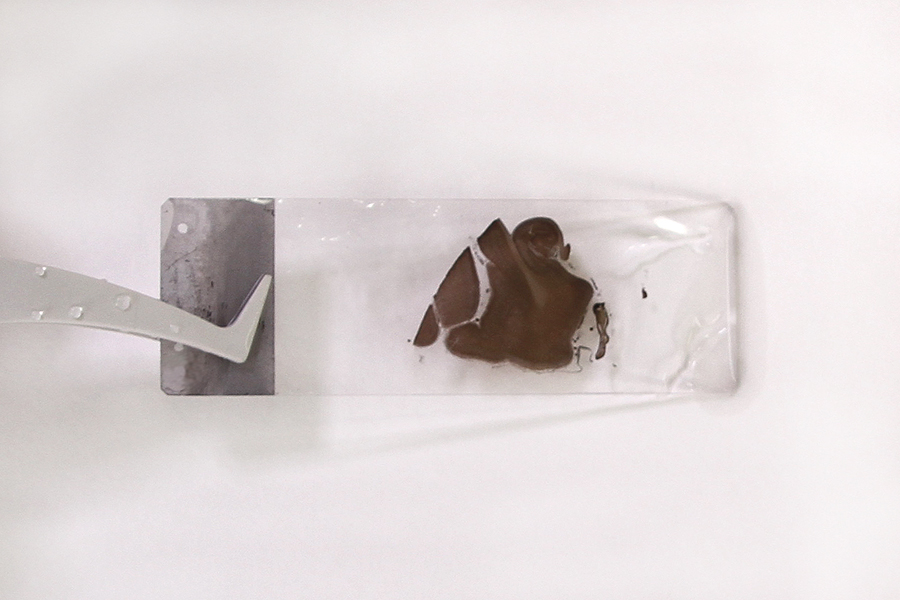
Section BAfter 13 minutes:Some parts of the section turn a very faint blackish brown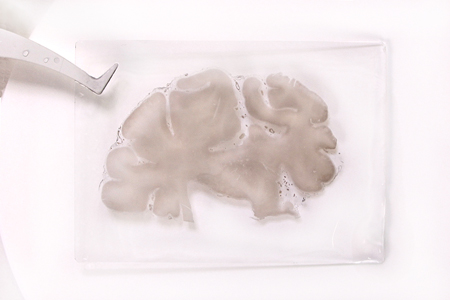 After 17 minutes:All of the structures are a blackish brown color
After 17 minutes:All of the structures are a blackish brown color
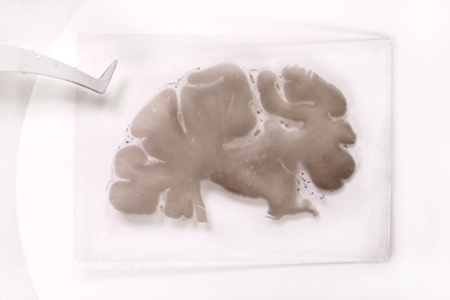
|
*5 Rinsing & Toning
| procedure | section colors | |
|---|---|---|
RinsingDistilled water
Toning1% gold chloride solution
|
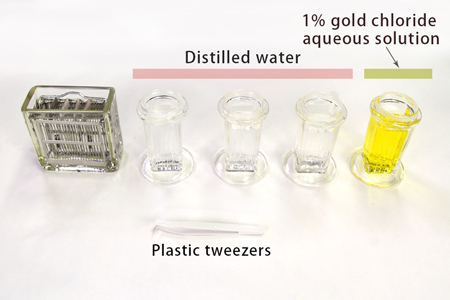 |
Reduction 8 minutes:Turns white
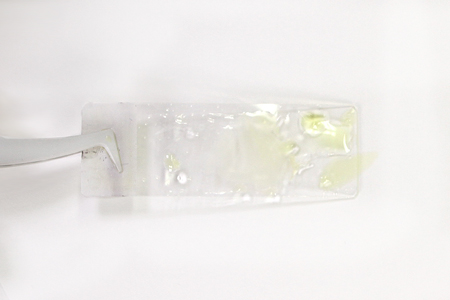 Reduction 15 minutes:Turns gray. The excess color fades, and the contours become sharp.
Reduction 15 minutes:Turns gray. The excess color fades, and the contours become sharp.
 Reduction 20 minutes:Turns blackish gray
Reduction 20 minutes:Turns blackish gray
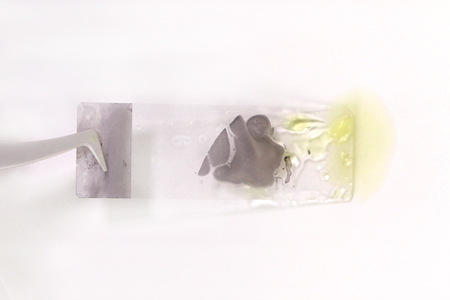
|
*6 Washing
| procedure | |
|---|---|
|
Running tap water
|
|
*7 Fixing
| procedure | section colors | |
|---|---|---|
|
Photographic fixing solution (diluted 10 times) or 5% sodium thiosulfate aqueous solution
|
 |
Reduction 8 minutes:Very faint lilac
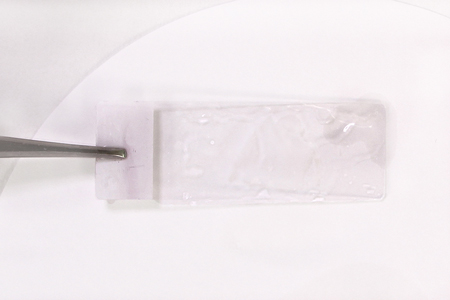 Reduction 15 minutes:Lilac
Reduction 15 minutes:Lilac
 Reduction 20 minutes:Gray purple
Reduction 20 minutes:Gray purple
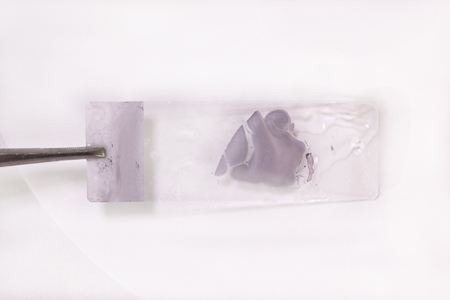
|
*8 Washing
| procedure | |
|---|---|
|
Running tap water
|
|
*9 Counterstaining
| procedure | |
|---|---|
|
Counterstain in Kernechtrot
|
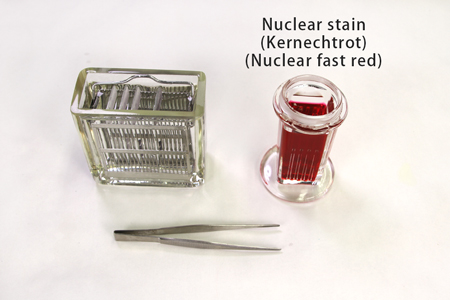 |
Staining results
The staining results differ depending on the reduction time.
| Reduction time of 8 minutes | Reduction time of 15 minutes | Reduction time of 20 minutes |
|---|---|---|
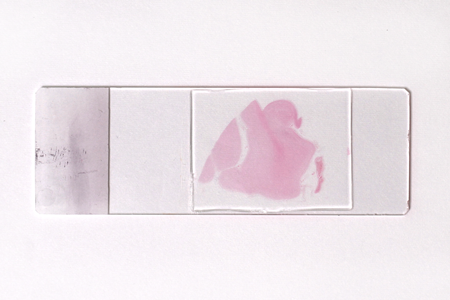 40 times 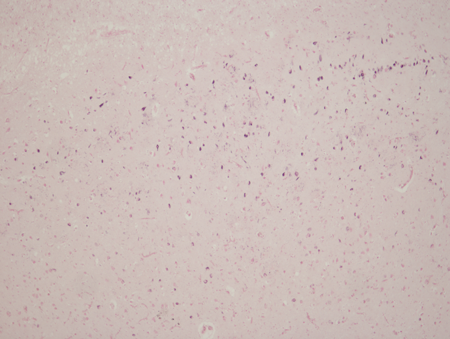 200 times 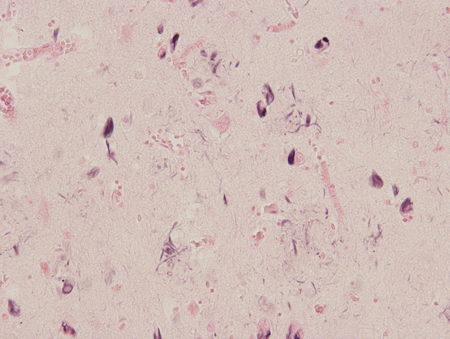 400 times 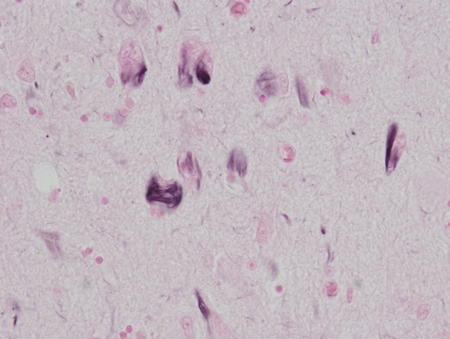
|
 40 times 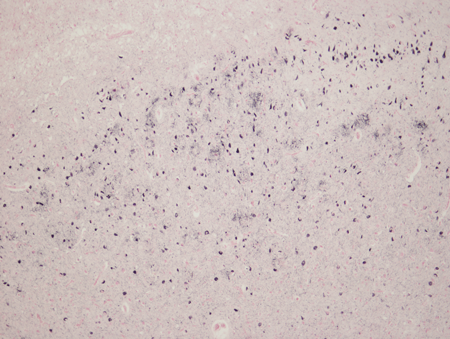 200 times 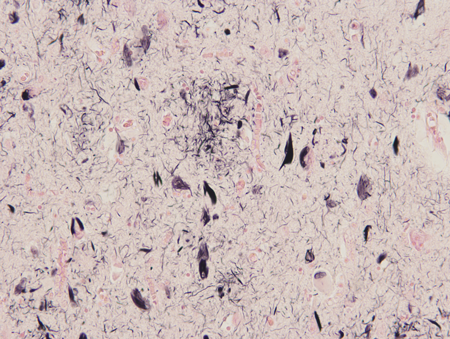 400 times 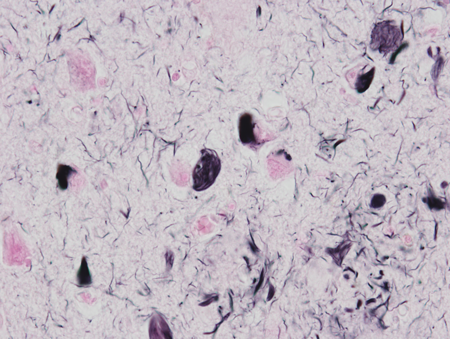
|
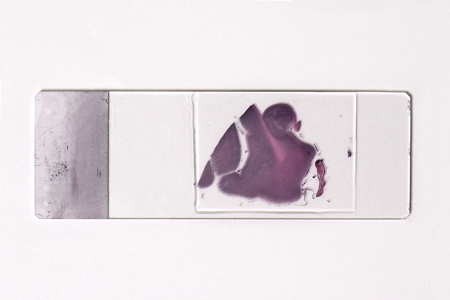 40 times 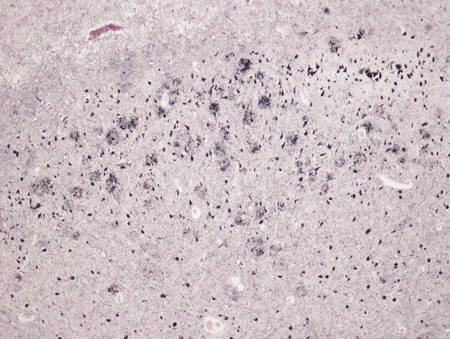 200 times 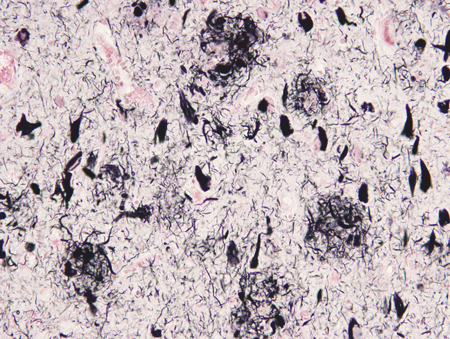 400 times 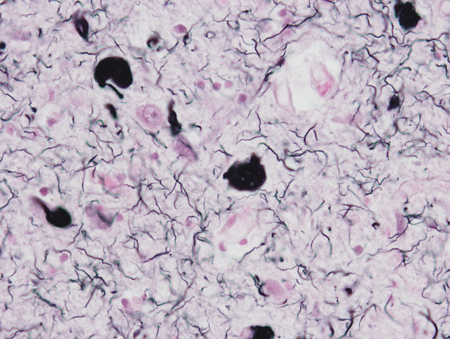
|
Reduction time of 8 minutes
The overall color is faint. This will not produce a positive staining image.
Reduction time of 15 minutes
The section is stained a sharp black, and the shapes of fine fibers can be discerned.
Reduction time of 20 minutes
The background is stained black. The cells are stained completely black, making it impossible to discern detailed structures.
Issues to consider with reducing solution reactions
Temperature of the reducing solution
Performing a reaction using room-temperature reducing solution will result in the reaction progressing too quickly, and the entire section will have a blackish brown stain.
To control the reaction, conduct it slowly using chilled reducing solution.
 Chilled reducing solution:After five minutes
Chilled reducing solution:After five minutes
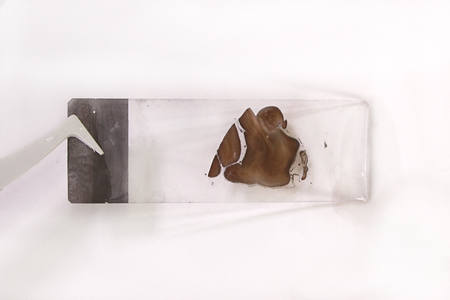 Room temperature reducing solution:After five minutes
Room temperature reducing solution:After five minutes
Types of glass slide
With MAS-coated glass slides, the entire glass turns black. Therefore, you should avoid using this type of glass; however, the pathological deposits can be detected.
We use silane coating or egg white albumin coating.
 Chilled reducing solution:After five minutes
Chilled reducing solution:After five minutes
Reagent
- 0.25% potassium permanganate solution
- 2% oxalic acid solution
- Alkaline silver iodide solution
- 0.5% acetic acid solution
- Reducing solution (mixture of solutions A and B)
- 1% gold chloride solution
- Photographic fixing solution (diluted 10 times)
③ Alkaline silver iodide solution
Dissolve sodium hydroxide and potassium iodide in that order in distilled water and then mix slowly with 1% silver nitrate aqueous solution.
The solution becomes cloudy when the silver nitrate is added; however, but it will become clear once everything is mixed together.
| sodium hydroxide | 4g |
| Potassium iodide | 10g |
| 1% silver nitrate solution | 3.5ml |
| distilled water | 100ml |
⑤ Reducing solution (mixture of solutions A and B)
solutions A
Dissolve ammonium nitrate, silver nitrate, and tungstosilicic acid in that order in distilled water and add aqueous formaldehyde solution afterwards.
| ammonium nitrate | 0.2g |
| silver nitrate | 0.2g |
| Tungstosilicic acid | 1g |
| Formaldehyde solution (37% to 38%) | 0.5ml |
| distilled water | 100ml |
solutions B
Dissolve anhydrous sodium carbonate in distilled water.
| Anhydrous sodium carbonate | 5g |
| distilled water | 100ml |
Reducing solution
Pour small amount of solution A into solution B at a time until equal parts of solutions A and B are mixed. The mixture is best prepared fresh each time. The solution will become cloudy when solution A is added; however, it will become clear once the solutions are mixed together.
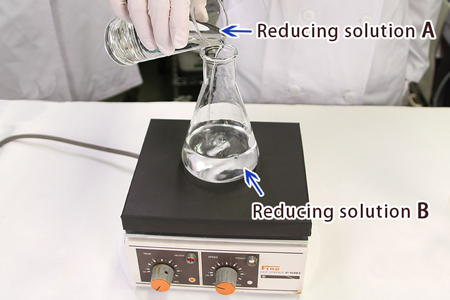
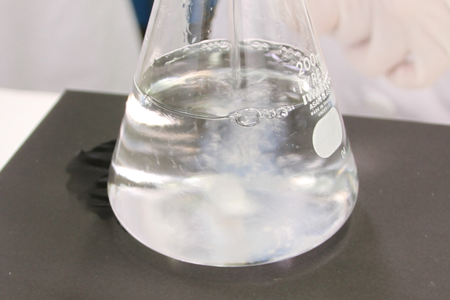
1% gold chloride solution
This solution can be used repeatedly. Filter the solution after use and then refrigerate it.
| Gold(Ⅲ) chloride acid tetrahydrate | 1g |
| distilled water | 100ml |
Quick tips for reagents
Some reagents are stable and may be used repeatedly.
Convenient reagents to prepare in advance
| Reducing solution A and B (Store refrigerated. ) 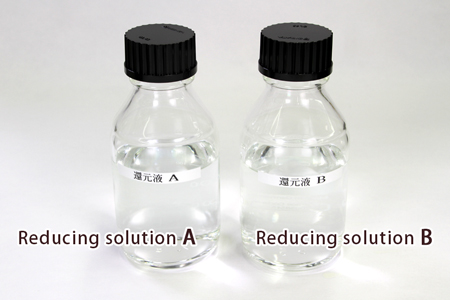 |
Alkaline silver iodide solution (store in refrigerator) |
1% silver nitrate solution (store in refrigerator) ※ Please note that reagents will turn black if they are stored for a long period. Discard it when it turns black. |
1% gold chloride solution (store in refrigerator)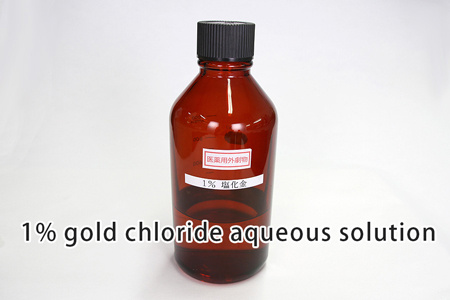 |
2% oxalic acid solution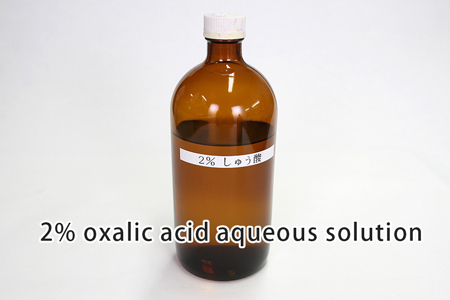 |
Fixing solution 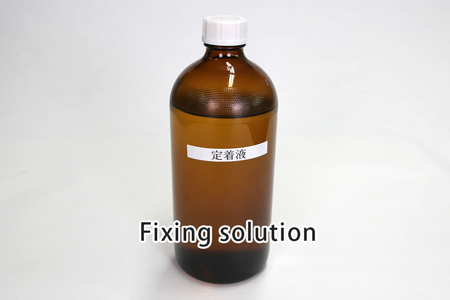 |
※ 1% gold chloride and 2% oxalic acid aqueous solutions as well as fixing solution can be stored for a long time and used for other silver stainings. Therefore, it is convenient to always have these reagents prepared.
Reagents that can be used multiple times (Store refrigerated.)
There are reagents that can be reused at a later date after previous use.
① Reagents that can be reused for staining over consecutive days
- 0.25% potassium permanganate aqueous solution: Can be reused several times. However, it changes color when stored for a long period. Therefore, it should be discarded after approximately one week.
- )2% oxalic acid aqueous solution:Can be reused once or twice; however, reuse depends on the number of slides stained at one time.
② Reagents that can be repeatedly reused over a long period of time
- Alkaline silver iodide solution: Filter after use. Discard the solution when it becomes cloudy.
- 1% gold chloride aqueous solution: Filter after use. This solution lasts a long time.

